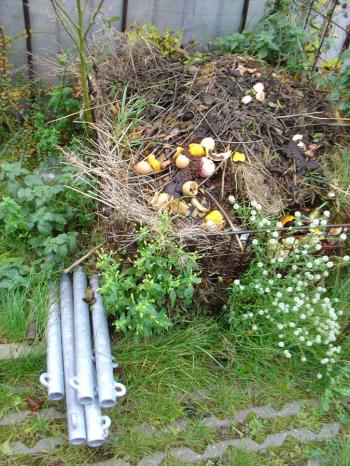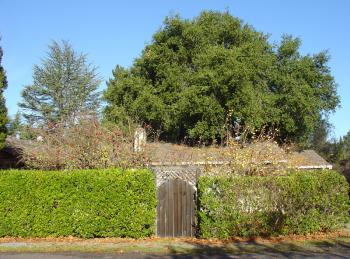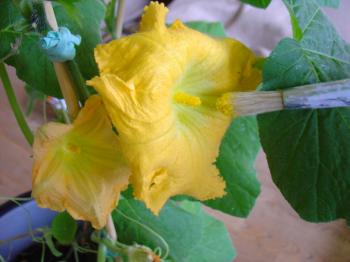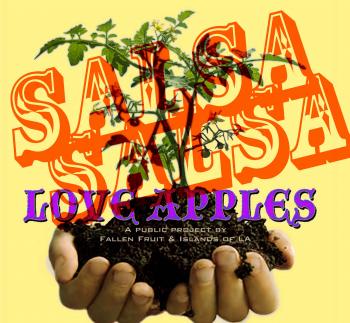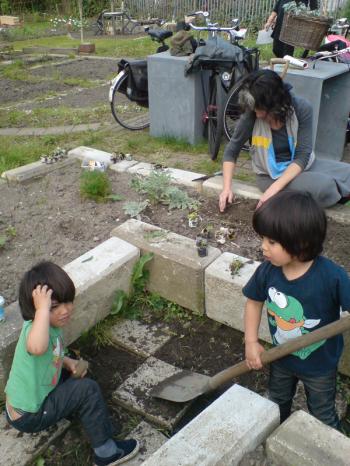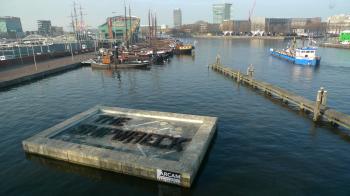And what will fuel the landscape of the future?
March 6, 2009
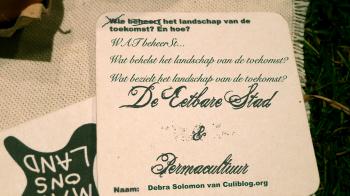
The answers are: the Edible City & Permaculture
This week I attended a dinner at the Netherlands Architecture Institute (NAi), smack dab in the exhibition called MAAK ONS LAND,
which literally translated means, MAKE OUR LAND
but which was translated by the NAi as the hopeful, SHAPE OUR COUNTRY,
but also implying the poetic, MAKE US SOME LAND
(because we don’t have enough for some crazy reason and we have a heritage of pulling it out of our thumbs) or
(HERE’S HOW WE COULD) DEVELOP OUR LAND, or beseechingly with melting eyebrows,
GIVE US SOME LAND, SOME ELBOW ROOM TO FULFILL OUR HEART’S DESIRE!
The title MAAK ONS LAND is ambiguous about whether it’s a call for action or an order from the masses directed at our planners. Non-Dutch people should note that We-Dutch have a high (urban) planner to regular person ratio, to the point that there’s barely a distinction between the two. Land use planning can have a timeline of up to 200 years (I joke not), with a shocking lack of chaos involved, or for that matter even tolerated.
This is an interpretation from the brain of an immigrant to merely explain the exhibition title. An exhibition which I didn’t see, because I (along with 50 other illustrious professionals) was invited to a dinner amidst MAAK ONS LAND and which was titled GREEN. Also ambiguous, but the alternative, FUTURE LAND USE PLANNING AND ITS REQUISITE INFRASTRUCTURE sounds about as sexy as an enema.
GREEN it is.
GIMME SOME LAND.
SLAP ME FIVE.
WHO WILL BE IN CHARGE OF THE LANDSCAPE OF THE FUTURE, AND HOW?
After changing the question from
IN CHARGE OF
to
RESPONSIBLE FOR
and saving the AND HOW part for later,
the discussion became rich and lively. Considering the wide-range of disciplines (architects, artists, designers, various sorts of planners, horticultralists, land managers, government ministers etc…) it was a miracle that we often got our noses pointing in the direction of land use and food.
Without reporting on the discussion, because you will certainly be able to read between the lines, here is my conclusion: We need a COMMON LANGUAGE to discuss future land use and planning that accesses current levels of knowledge from the diverse disciplines involved.
This conclusion keeps cropping up whilst keeping mixed company. Because the archi/planner/policy maker bro’s like their statistics and NEED their statistics to make/justify decisions, we need numbers that describe different forms of land use, agricultural output and food flow impact. Current statistics are INsufficient to address this subject (see below). (Jago vB., Jan H., Menno S., let’s talk about this.)
- 1. We need to understand in much greater detail what the presence of different kinds of food in our diets means for our landscape - in a geo-political sense, but also in terms of needed infrastructure and planning locally and regionally. A small shift in diet could mean a large change in land use. There is a lack of imagination about how a food-related infrastructure that would impact our cities to such a tremendous degree (already does) could be used, nay SHARED equitably.
2. We need to have a greater understanding about what the presence of food in our cities means and does in terms of FLOW and how food flow can be used more efficiently, also in terms of health and income generation for local populations. Again, small changes and benefits concerning i.e. the presence of WHOLE FOODS could have an enormous and beneficial impact. Experiments exist, let’s get some numbers together for the guys that loves them up some numbers!
3. There is a LACK of knowledge about the various forms of agriculture. This needs to change forthwith. Prevailing misconceptions amongst many architects and planners include an assumption of traditional (high-tech) rural agriculture, monoculture, export culture, business models based upon farm subsidies and current levels of oil-use, and the continued production of industrialised foods and food products/components (globally) requiring oil-rich distribution methods. We are not discussing all of our viable options or the conditions that we will likely encounter in the future.
4. There is a LACK of knowledge about permaculture, let alone reliable statistics concerning its level of productivity as an agricultural form on the (urban) landscape. We need to share knowledge and develop statistics about RESILIENT FORMS of agriculture in the relevant planning forums.
5. There is currently NO holisitic (planning) visioning for agriculture (primarily urban agriculture) which is integrated into Western European urban culture. (Actually there is… but I’ll tell you about that later.)
As someone who believes that it is in our interest in our roles as citizens to invest in our own communities and our own economies - that investment does NOT include filling urban spaces with TOWER BLOCK agriculture FOR EXPORT USE / OR HORTICULTURE. It is not that I oppoose the high-rise or the intensive programming (because I am actually positive about certain forms), but that many/most of these projects are intended to benefit global agro-business and horticulture, and not intended to feed us. Also, the architecture supporting these intensive forms of proposed vertical (urban) agriculture needs to be RESILIENT in terms of crop and fuel use.
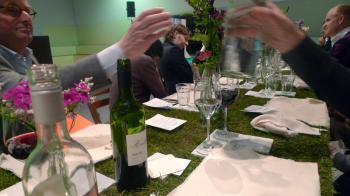
Men sharing water, not necessarily opinions
Even in the most progressive professional discussion about urban agriculture we need to make sure that we are on the same page before we can even speak of PLANNING. We need a common language.
So… how did I answer the question that the NAi asks its visitors? First of all I changed the question to … an even better question: WHAT WILL FUEL THE LANDSCAPE OF THE FUTURE?
And my answer is and remains: the EDIBLE CITY… a pre-cursor to MAAK ONS LAND.
debra at 19:42 | Comments (3) | post to del.icio.us

